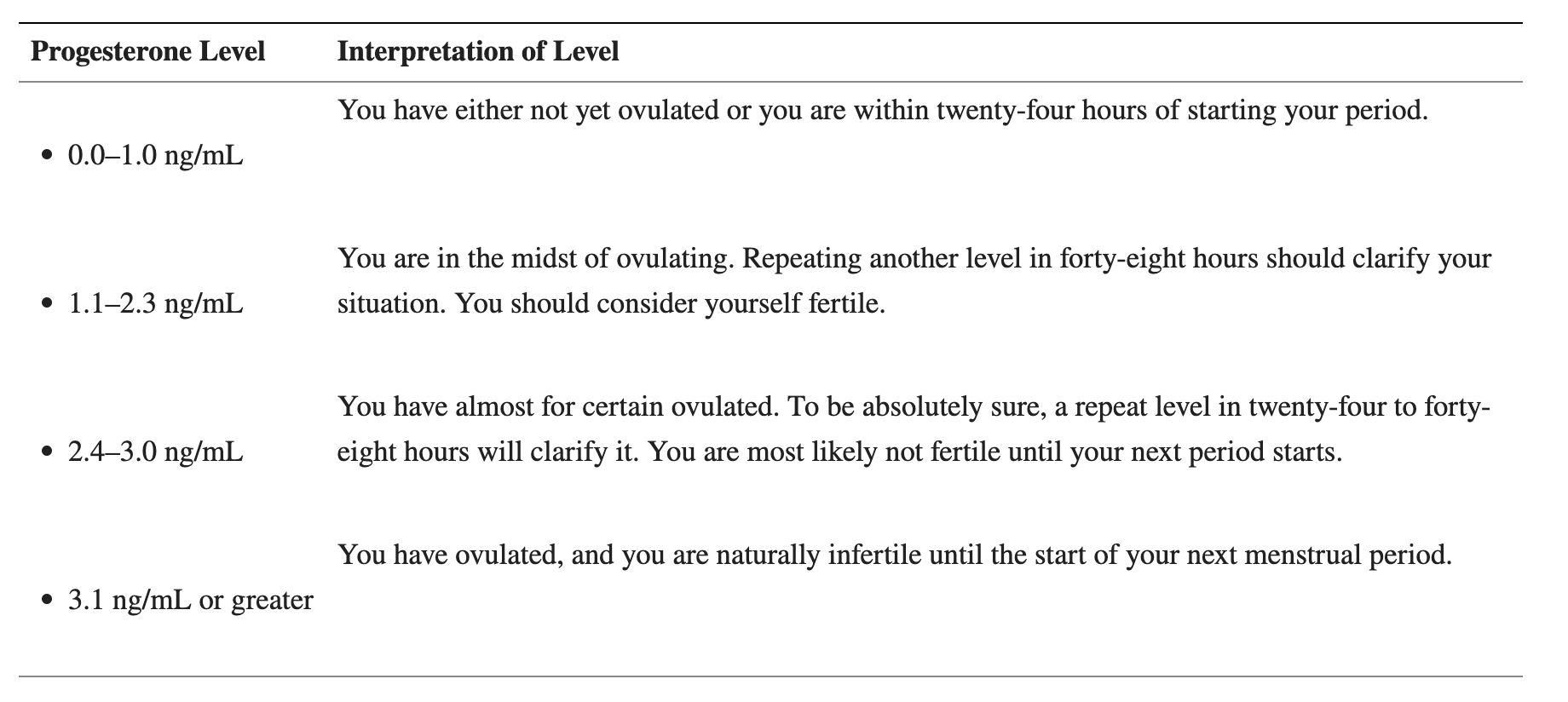
Sex Ed: Book for Catholic Parents
November 30, 2023
Sexuality: Church Guidelines for Educating and Forming Our Children
January 4, 2024Family Planning Blood Draws
This week, we're going to talk about something I get a LOT of questions about online (and from clients!):
FAMILY PLANNING PROGESTERONE BLOOD DRAWS
A family planning progesterone blood draw is a test that can be ordered at almost any lab and can be prescribed with a "standing order," meaning you don't need to specifically ask your physician to send the lab order each time you want to go get this test done.
The test is used to confirm ovulation through progesterone serum levels, which can be useful in situations like:
- you are using a cervical mucus (ovulation) method and are not confident identifying ovulatory peaks
- you are unable to get reliable temperature readings to confirm a biphasic (ovulatory) shift
- you are in an irregular cycling situation and need to confirm ovulation following an estrogen/LH hormone surge
- there is a very serious need to avoid pregnancy and confidence level must be VERY high that ovulation has passed in order to resume intercourse for the cycle
It's not an easy thing to add to your charting repertoire, for sure, but in some situations it can really be helpful.
So: practically speaking, what are the logistics of doing this test?
1) Figure out how and where you'll get a test. In most cases, you'll have to ask your doctor to put in that initial lab order for you. Keep in mind: there are companies which offer at-home services for self testing: but this is a test that you don't want to wait days or weeks for in order to get a result! So you'll probably have to go in-person.
2) Identify "Peak" with your method rules, either with fluid or with a hormone test.
3) Get your blood draw on Peak + 3 (3 days after your Peak Day), or Peak + 4 (4 days after your Peak Day)
What happens next can vary a lot, based on the lab you have chosen and what your doctor's response time tends to be. But you should be able to get fairly quick results. In many cases, your lab or your doctor can confirm for you whether the levels are high enough to show ovulation has occurred.
But you're reading this post, so I want to make sure that YOU are equipped to understand or even interpret those results on your own, too, because Creighton put a lot of effort into making this valuable information accessible!
So here's an easy chart to file away, from a research paper by Dr. Hilgers in 2019:
Now, there are two things to note:
First, these levels are blood serum levels. They are not the same values used to assess progesterone values with urine-based PdG tests. So don't try to compare those two things!
Second: a family planning blood draw is NOT the same as a standard test to "check progesterone levels." If you suspect that you have low progesterone and are looking for a panel to determine whether your hormone ratios are out of balance, this test is done either as a single draw between Days 7-9 after ovulation, or (if the doctor is really thorough!) approximately every other day from Peak + 3 through Peak + 9. Those tests are not designed to determine the end of a fertile window, but are meant to give you information about the relative "health" or "strength" of your progesterone levels following ovulation.
It's also important to note that people who use Natural Family Planning will understand and typically will be able to identify "Peak" per their method, as a sign of ovulation. Many doctors do not expect that you know how to do this.
So if you ask about a family planning progesterone blood draw and your doctor suggests you to do it on Day 17, this means they are assuming you ovulate on Day 14. And we know better than that, right? What they really mean is to do a test 3 days after suspected ovulation.
The same goes for doctors who order progesterone level tests on Day 21. They assume you are ovulating on Day 14 and are looking to test levels about 7 days after ovulation.
So always be ready to interpret those "DAY X" recommendations by subtracting 14 (the assumed date of ovulation) and that's how many days post-peak you should be to get that test. 👍👍👍
Curious to learn more?
Read the journal article from Dr. Hilgers which explains this study, and offers further insights into the great research done in conjunction with the CREIGHTON MODEL FertilityCare system!
❤️ Loved this post? Be sure to subscribe to the Body Lit Library weekly newsletter, where every Thursday you'll get access to new content, updates, and special insider offers!
📚 Want to learn more? Check out our lifelong body literacy education courses and books, from puberty through perimenopause and everything in between: pearlandthistle.com



